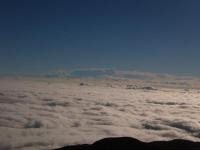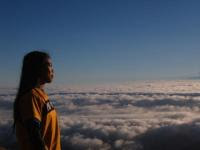Mountaineering:
a booming leisure
activity in the Philippines
Norberto Puda
According
to britanica.com, mountaineering, also called mountain
climbing is the sport
of attaining, or attempting to attain, high points in mountainous regions,
mainly for the pleasure of the climb. PNU-Mountaineering Club defined
mountaineering as physical and mental activity that requires skills,
experience, common sense, and guts in ascending and descending mountains.
Mountaineering
in the Philippines is one of the booming leisure, recreational and physical
activity nowadays because during these days,
hundreds of organized mountaineering groups were formed. According to pinoymountaineer.com,
in our country, there are 48 school-based and 97 community-based (Luzon,
Visayas and Mindanao) actively participating in different organized climb such
as the “Freedom Climb” held last June 12, 2011 in different mountain locations
garnering points to be qualified in Guiness Book of Record in the category of
climbing together and celebrating the independence day in various number in
different mountain locations all over the country.
There
are accounts in different website telling stories about the experiences in the
mountain they have conquered. The fact that when we go to different malls, we
can see outdoor shops side-by-side. It only means that it needs to feed the
necessities of outdoorsmen especially on the basic equipment used in trekking
and camping.
The pleasures of mountaineering lie not only
in the conquest of the peak but also in the physical and spiritual
satisfactions brought about through intense personal effort, ever-increasing
proficiency, and contact with natural grandeur. The greater rewards do not come
without considerable risk and danger. The first great peak ascended in modern times
was Mont Blanc, in 1786. Other Alpine peaks followed, capped by the ascent of
the Matterhorn in 1865. By the 1910s, most peaks of the Andes, the Rockies, and
other Western Hemisphere ranges had been climbed, including Mount McKinley
(1913). Beginning in the 1930s a series of successful ascents of mountains in
the Himalayas occurred; the summits of many of the Himalayan Mountains were not
reached until the 1950s, however. Of these climbs, the best known is the 1953
ascent of Mount Everest by Edmund Hillary and Tenzing Norgay. In the 1960s
mountaineering became an increasingly technical sport, emphasizing the use of
specialized anchoring, tethering, and grappling gear in the ascent of vertical
rock or ice faces.
As with
many life-changing decisions that people make, many people became full-fledged
outdoor enthusiasts for many reasons. It only used to be a dream, so
far-fetched they never imagined that someday they would be among the privileged
few who, despite a chaotic schedule, would still find time to commune with
nature, meet new friends, discover hidden wonders, and have the pleasure of
writing about it.
Mountaineering
has been in existence for years. In the Philippines, it met its glorious height
in the early 1990s. Ascents to the country’s highest peak have become more
frequent that throughout the years thousands have conquered and survived. The
sport itself has lured thousands in its web of danger, challenges and risks.
Equipping
members to know the basic knowledge about Basic Mountaineering Course which
covers the trainings about the history of mountaineering in the Philippines,
trail movements, camp management, equipment familiarization, and about learning
the culture of a place were planned to go to. Group members were also empowered
with the knowledge in first aiding, swimming, orienteering/map reading,
rope-safety courses and various physical activities before setting out for a
climb.
Mountaineering
is not only a leisure activity but rather an avenue for promoting fitness and
wellness and nature preservation, for developing leadership, and for reaching out
to other communities.
As the
Filipinos reached the highest peak of the world, Mt. Everest in 2008, it
started the awareness of Mountaineering not just a physical or leisure activity
but in a way that gives honor to the country. Many Filipinos on this time were
motivated to try trekking different unknown and undocumented mountains and for
some, to conquer fear of heights or even the darkness of during the stay in
summit. As Rommy Garduce of UP-Mountaineer reached the highest summit of the
seven continents, Filipinos were proud and amazed.
Many
were lured into the sport itself. How could they not with mountaineer friends
from all over the Philippines? These people would often tell stories about their
climbs, their treks that many have become envious of them. They weren’t
comfortable about it at first. They fought so hard but they couldn’t beat the
desire to experience it myself so they joined.
And it
was one of the greatest decisions they’ve made and they’re extremely glad they
joined. It brought me so much pleasure that they would gladly go exploring some
more despite the dangers and risks it poses and a chaotic schedule – especially
now when most people do both day and night shifts at work.
Climbing
nowadays viewed as an outlet of busy, stressful, and unaccommodating
circumstances experienced during work. For some people trekking and climbing
played a vital role for their fitness so many of them tried to climb mountain
once a month and for some addict-outdoors men, during the weekends. If
mountaineering would be imparted as an active recreational activity, concerns
such as spiritual (God, nature and meditation), conquering fears, escape to
busy and stressing work, travel (an avenue to see places), relationship which
refers to improving social skills, growth and skills (first aid skills,
cooking, backpacking, leadership, and time management), physical fitness,
camping, cost-effective hobby and research education.
Mountain
climbing is not just going to different places, conquering nature, and
achieving goals, it is a lifestyle where in people should impart climbing as a
part of weekly or monthly routine. Have you seen sun floating in the clouds
during the break of dawn? Have you seen a rounded shape rainbow? Have you ever
experience to feel the chill that ticks to the bone? Have you ever seen species
that you do not knew its’ name? Have you ever asked yourself how great is our
gods? I challenge you to see the wonders of nature, the beauty of nature that
it is not only seeing through pictures but experiencing it. Come on! Believe
me. You will find it refreshing and soul-gratifying. Have a passion for the
outdoors. Be a nature lover for a change.
References:
http://www.pinoymountaineer.com/2008/11/essay-introduction-to-mountain-climbing.html




















